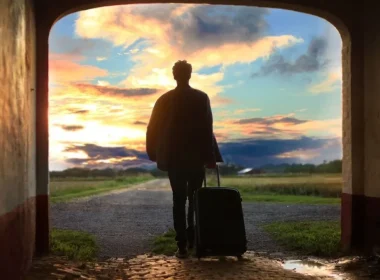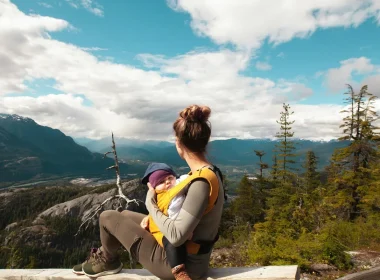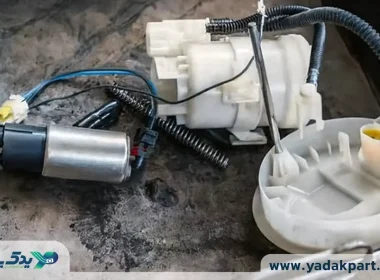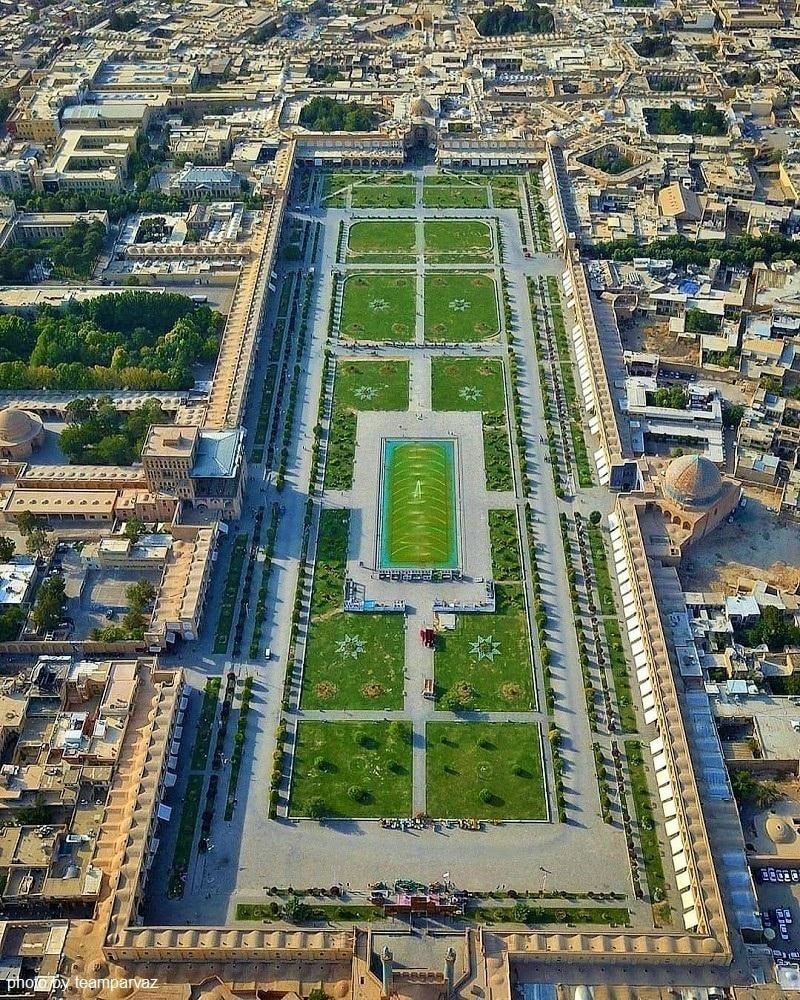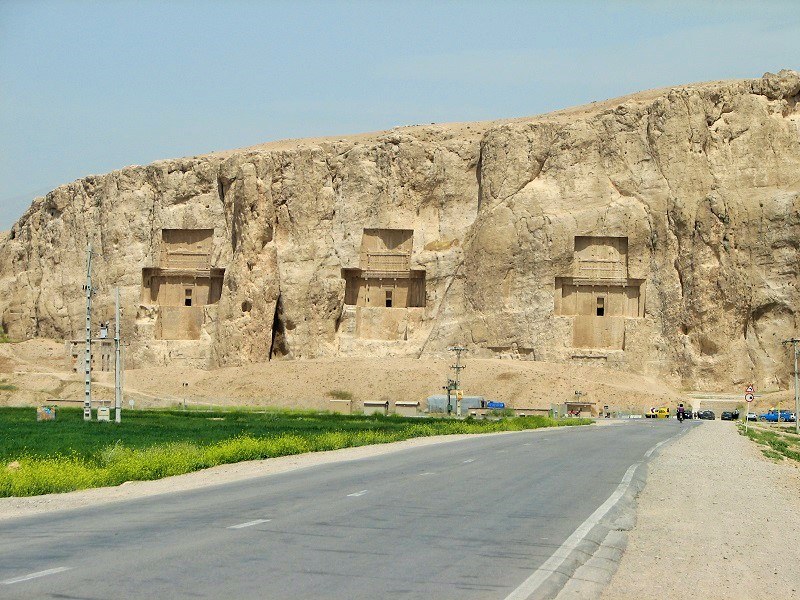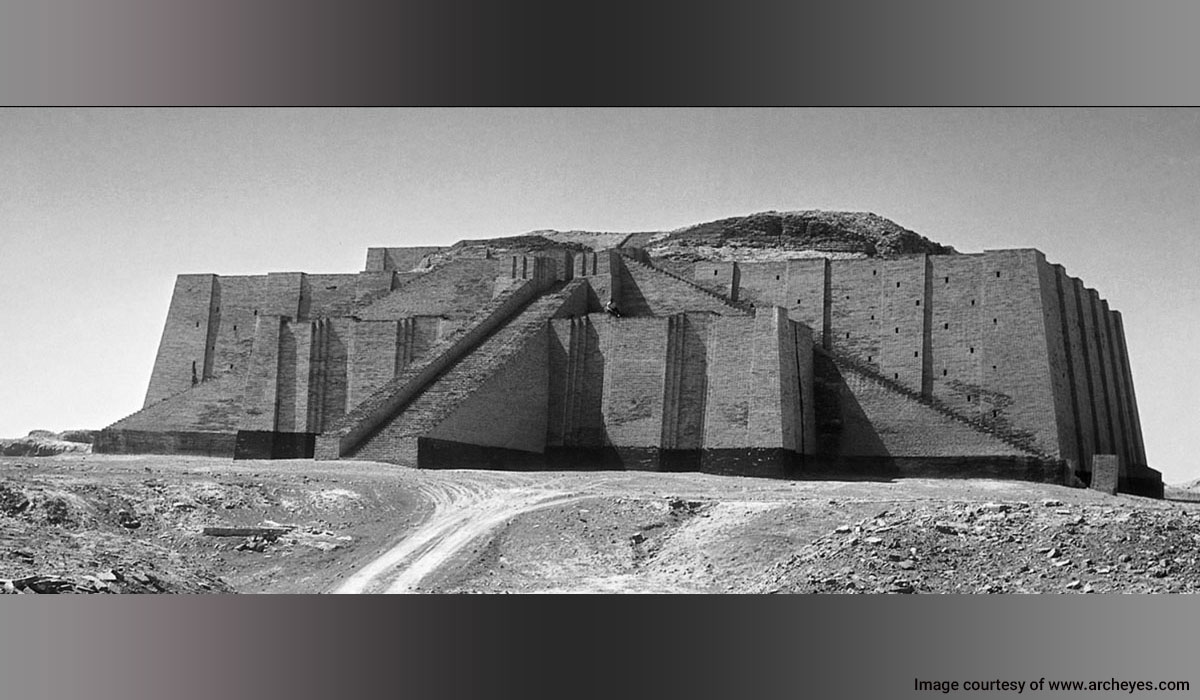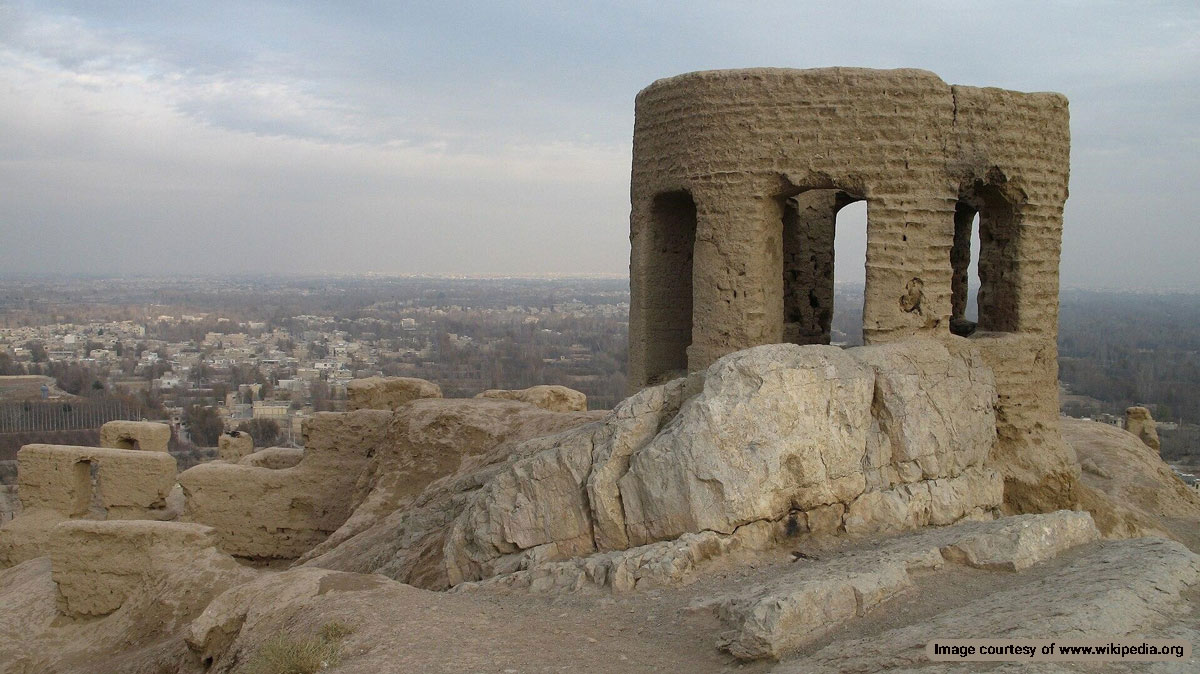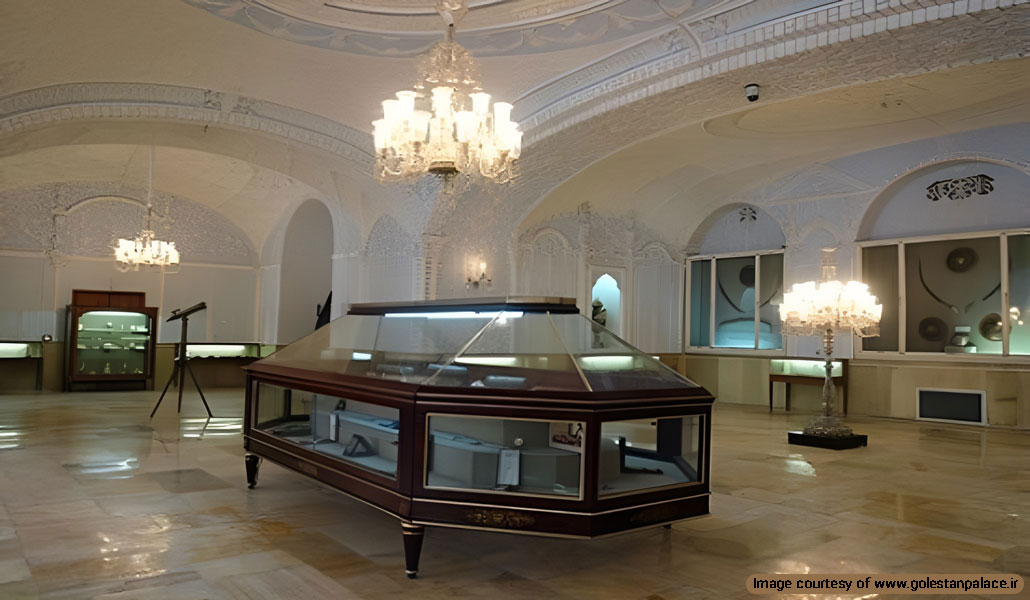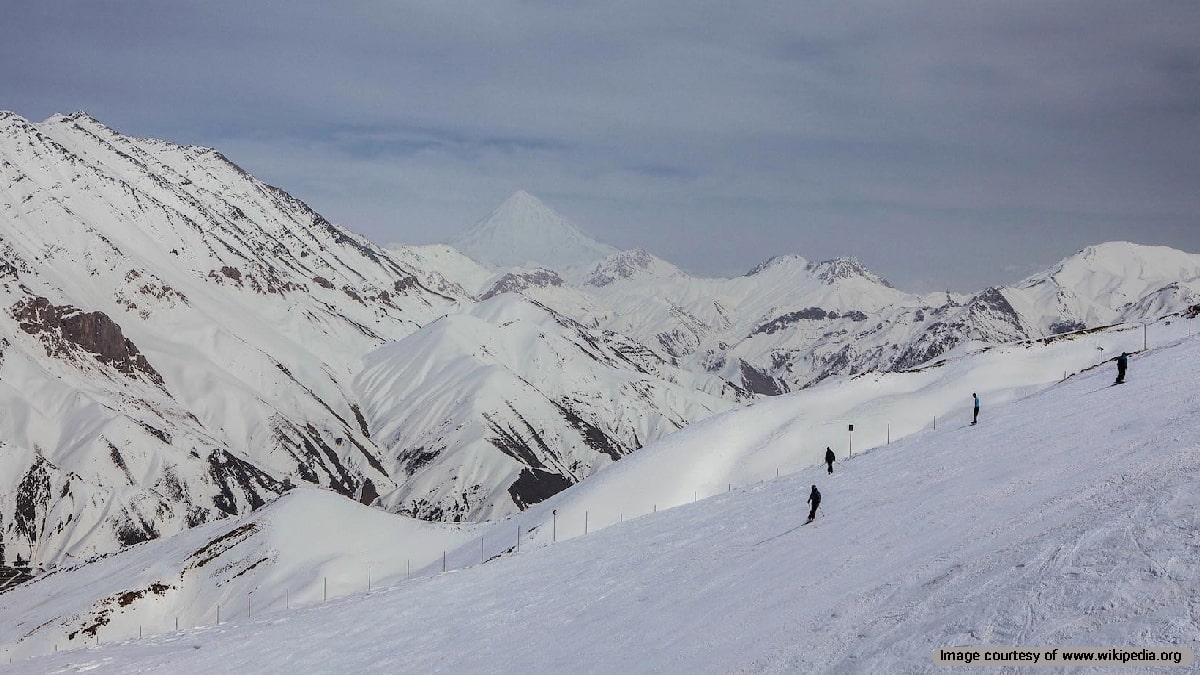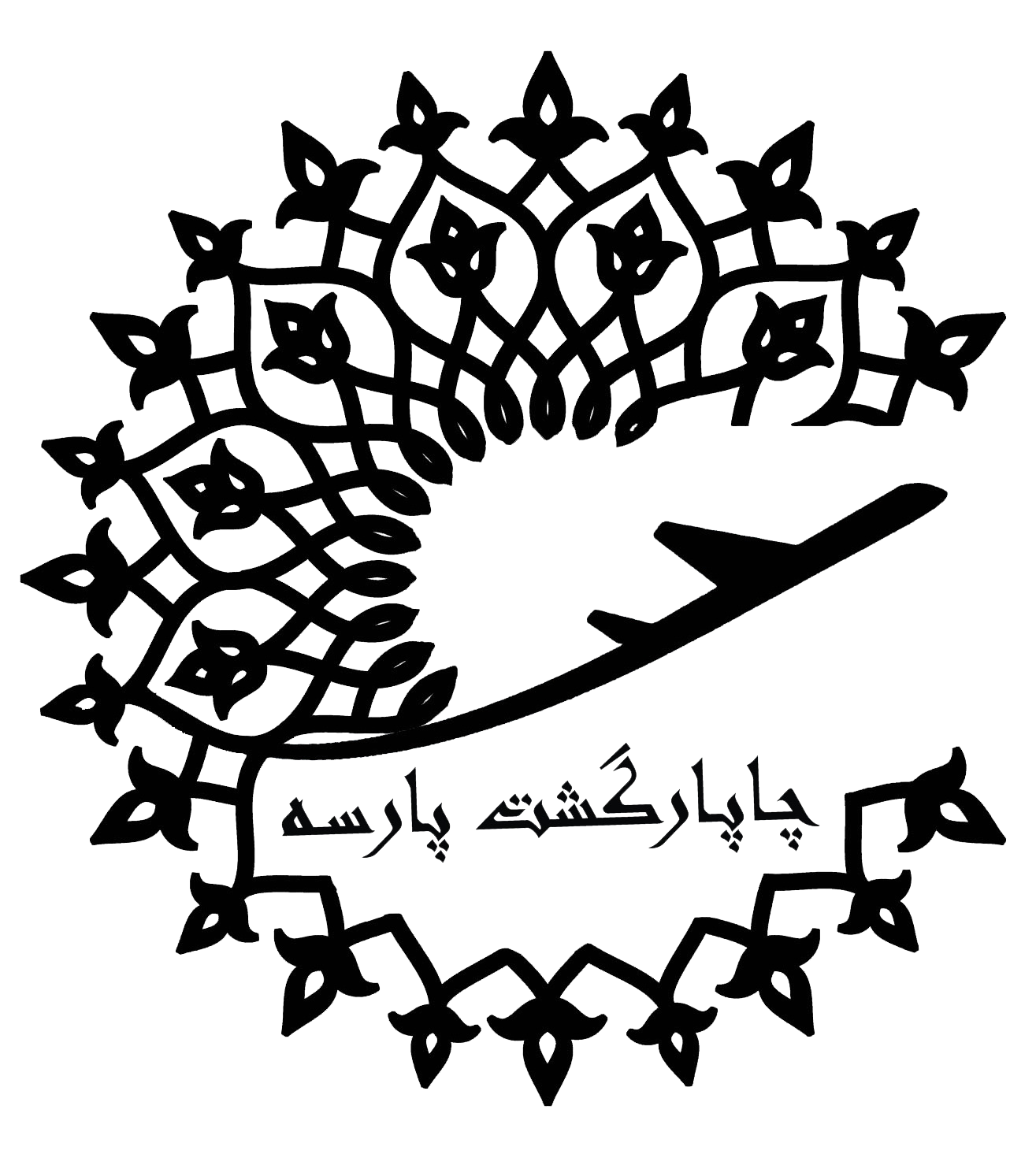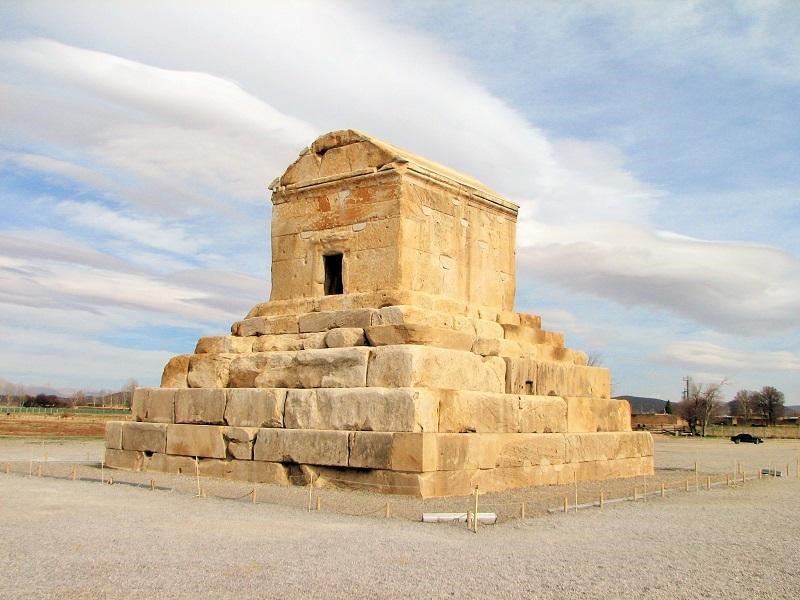
The tomb of Cyrus in Pasargadae and the surrounding monuments are part of Iran’s tangible cultural heritage, registered in the list of Iranian monuments, known as Pasargadae World Heritage Site. When you visit this ancient site and its monuments, remember that the Pasargad historical monuments are the heart and soul of Iran, and without them, the Persian Empire, Persian culture, and Iranian identity would have faded into oblivion.
The Achaemenid dynasty’s rise to power in 550 AD in the Marghab Plain, where Pasargad is located, altered the course of history for both Iranians and the world.
We advise tourists who travel to Iran to stop by Pasargadae and ponder how an ambitious man of pure heart formed a nation and promoted human rights and mankind into the next age. We are talking about Cyrus the Great, a man from the Achaemenids dynasty, a Persian man whose ancestors ruled over south and central Iran for a long time. The Persians were either independent kings or appointed by the Medes empires to govern the area.
The tomb of Cyrus the Great is the only structure in Pasargadae that was described by Greek historians.
The Reign of Cyrus the Great
Astyages, the last king of the Median Empire, in the northwest of modern Iran, ruled over the Medes. He was a tyrannical ruler who made the Medes miserable and in their despair, they saw no choice but to wait for a savior. At the same time, Cyrus II was the king of Anshan. According to some historians, Cyrus II is the son of Mandane and the grandson of Astyages. Of course, some consider this a mere political move to present him as half-Medes to be more acceptable in the eyes of the Medes society.
Cyrus II battled and defeated his grandfather in Marghab Plain. This victory became the foundation of the union between the Medes and Persian empires and the formation of the great Achaemenid Empire.
Cyrus the Great established the long-lasting Achaemenid Empire and united many other nations and ethnic groups under the banner of the Persian Empire to live together in peace.
Cyrus is the first figure in world history who was granted the nickname “Great”. For the first time, he established a unified and strong central government in the Iranian plateau. One of the most important policies he emphasized was tolerance towards different religious beliefs, traditions, and ideas.
He never forced any group to change their beliefs to fit in with the empire. In his system of government, the country was divided into provinces, called a Satrap or Satrapy. Different groups of people lived together in satrapies without feeling religious and cultural divides or facing any discrimination.
After Cyrus won the war, he decided to build a city where he defeated Astyages and named it Parskade or Pasargadae, meaning the place where Persians live.
Cyrus the Great built a city where Achaemenid art and architecture flourished and Iranian gardens were designed for the first time. Marghab Plain was prosperous and teeming with life during the construction of Pasargadae. Flower gardens and singing birds granted unique beauty to this city. Cyrus lived and ruled there and was buried there after he was killed in battle.
The tomb of Cyrus in Pasargad is the most important historical monument of Iran to those who value and respect the founder of Persia.
Cyrus the Great was not a king who ruled from his glorious throne oblivious to what challenges threatened the stability of his kingdom. He participated in the war against the White Huns, the Hephthalites; Because they were the biggest threat to civilization.
The White Huns attacked the people of Persia 1 on the eastern borders. As long as the Achaemenids were in power in Iran, the Huns never passed through the country and were held in the eastern part. Finally, Cyrus the Great was killed in one of the wars against the White Huns. Later, the Huns made their way to Europe.
Pasargadae Nomenclature
Based on the available evidence, this plain was first called Pasargadae during the Achaemenid period. Cyrus the Great made Pasargad Plain the center of his empire and built his capital there. The first writing mentioning Parse is attributed to Ctesias, a famous Greek physician and historian. He was a relative of Hippocrates, who was captured by the Iranians in 414 BC and became a physician of the Achaemenid court. Herodotus, the famous Greek historian, also used the name Pasargadae and mentioned in his book that Persians are divided into several tribes; One of them is the Pasargad tribe. The Achaemenid lineage and the empire originated from this tribe.
This plain was known by the same name in later periods until the Sassanid era, and after Islam, it was changed to Marghab.
Who Built the Tomb of Cyrus the Great?
According to Greek historians and based on the type of architecture that fits Cyrus the Great’s taste and other existing evidence, it appears that this building was built by his order.
Discovery of the Tomb of Cyrus
There are very few and scattered accounts of this Achaemenid structure in Iranian historical books. The oldest one is in the Fars-Nama book of Ibn Balkhi:
Kelanan meadow is near the tomb of Madar-e Suleiman (Solomon’s mother); Its length is 12.5 kilometers, but it is very narrow. The tomb of Solomon’s mother is made of stone in the shape of a four-sided house and no one can look inside.
This massive building was known as the tomb of Solomon’s mother until in 1818, Sir Robert Ker Porter, an English writer, painter, traveler, and diplomat, visited Pasargadae and discovered that this building was the tomb of Cyrus the Great mentioned by the ancient European writers. He is the first person to declare with complete certainty that the tomb known as the tomb of Solomon’s mother is the tomb of Cyrus the Great, the founder of the Achaemenid dynasty.
Architecture of the Tomb of Cyrus
In 1821, Claudius Rich wrote about the significance of the tomb and the figure laid to rest in it: “The highly respectable appearance of this stone building immediately caused a kind of fear in me along with an urge to bow in respect. I realized that I did not have a proper understanding of it until now. Therefore, immersed in thought, I sat on the steps of the building for about an hour until the moon appeared on top, and that’s when I said to myself that this must surely be the tomb of the best, most famous, most respected and most praiseworthy king of the East.”
What catches the viewer’s attention on the first visit to the tomb is the simplicity and plain design and at the same time the grandeur of this large building. This monument of 25 centuries of history has survived against destructive elements and is still largely visited by tourists from all over the world.
The tomb consists of two parts: a stepped platform and a tomb chamber. The height of the building is about 11 meters and it is made of huge cubic stones. These stones are connected without any kind of mortar using only metal dovetail joints and lead. This method of connecting stones in the building was one of the Achaemenid inventions. Unfortunately, over the years, many of the building’s dovetail joints have been stolen, and this has reduced the building’s stability. The restoration projects had to use cement and stones from the Sivand mine to fill the cracks.
There are six steps. The first three steps have a total height of about one meter and the next three steps have a height of about half a meter. There is a flower in the shape of the sun engraved on the stone above the entrance underneath the ceiling. Today, only half of this decorative element remains, which has faded halfway. The flower had 12 main petals, 24 petals in the next row, and 24 pointed petals in the outer row, which evokes an image similar to the sun. In Persian, Cryus means the sun, and this flower is a symbol of his esteemed spiritual position in the eyes of Iranians.
The floor of the building is made with two large slabs of stone. One of them is penetrated by holes, which have likely been dug to reach under the stones. These holes have caused the stone to degrade.
The ceiling of the tomb of Cyrus is flat and simple from the inside, but it is gable-shaped from the outside, with a Ʌ-shaped two-sided slope. Some believe that the body of Cyrus was placed in the cavity between the inner flat ceiling and the gable. It is also believed that the Achaemenid architects created a false space between the ceiling and the sloped roof to reduce the structural load.
The Architectural Style of the Tomb of Cyrus in Pasargadae
The tomb of Cyrus is similar to the ChoghaZanbil Ziggurat in terms of architectural style and especially the building plans. Its gable roof is likely based on the Urartu temple in Musasir, and it can be said that the Achaemenid architects were inspired by the Urashtu roof ridge covering. The Urartus were a tribe living in the northwest of Iran. At the beginning of their arrival in Iran, the Persian tribes settled around Lake Urmia, and the Urartos were the first neighbors of the Persian tribes.
There are no other buildings with a similar architectural style to the tomb of Cyrus anywhere else in Iran or any other Iranian building. But there are similar examples in the monuments of the Urartu people, the ancient inhabitants of northwestern Iran, around Lake Urmia. Therefore, the experts have considered the artistic influence of the Urartu people on Persian architects in the building of this tomb, which is one of the first buildings of the Achaemenid period, as reminiscent of the era neighboring the Urartu.
The only other stone monument with an architecture entirely similar to the tomb of Cyrus is located at Desha Bespar (Bezpar), southeast of Kazerun. This stone building is smaller, less than ¼ the size of Cyrus’ tomb, and is known as “Gure-Dokhtar”. This structure was discovered by Professor Louis Vanden Berghe, a Belgian archaeologist, in 1960, and it is probably the tomb of Cyrus the Great’s grandfather, Cyrus I.
Tablets in Cyrus the Great’s Tomb
No tablets or petroglyphs have been found inside the tomb of Cyrus; But according to the Greek historians, two tablets in this tomb read:
O human, whoever you are, wherever you come from, for I know you will arrive, I am Cyrus, who has established a vast kingdom over the Persians; So don’t be jealous of this handful of dirt that covers my body.
O human, I am Cyrus the son of Cambyses, the founder of the kingdom of Persia and the king of Asia, do not envy this tomb of mine.
Cyrus’ Body and the Artifacts Inside the Tomb
There are various accounts about how Cyrus’ body was placed in his tomb in Pasargadae. In his report, Arrian of Nicomedia mentions the golden coffin in the chamber of Cyrus’ tomb where his body was laid to rest. Some archaeologists believe that the body was placed in the area between the ceiling and the gable. There were also valuable artifacts inside the building, most of which were looted by the Macedonian soldiers.
Greek historians have mentioned the golden coffin in the tomb of Cyrus. Paintings of the tomb of Cyrus at different times drawn by tourists and explorers show that the area around the tomb of Cyrus has not always been empty. The images in the travelogs show that earlier, there were columns around the tomb, which most likely belonged to other buildings around the tomb of Cyrus.
Changing the Name of the Tomb of Cyrus to the Tomb of Mother of Solomon
It is said that Iranians changed the name of this tomb to the Tomb of Madar-e Suleyman (Mother of Solomon) to avoid its destruction during the Arab invasion of Iran in the 7th century AD. Even the name of the village near it is “Mader-e Suleyman”.
Historical Mosque Near the Tomb of Cyrus
After the arrival of Islam in Iran, the tomb of Cyrus was recognized and respected as the tomb of the mother of the prophet Solomon. According to historical sources, during the reign of Salghurid Atabegs over Fars, a mosque was built around the tomb on the assumption that this was the tomb of Solomon’s mother. The structure was demolished in later periods.
Stones and materials taken from Pasargadae were used in the construction of the mosque. The columns seen in travelog paintings may be the remains of the mosque’s columns. During the Pahlavi period, these columns were removed from around the tomb of Cyrus, and the tomb of Cyrus became the only building in the Marghab Plain.
Restoration of the Tomb of Cyrus in Pasargadae
The first known renovation of the tomb of Cyrus took place after Alexander’s Invasion of Persia by Alexander’s order after Macedonian soldiers ransacked the tomb and plundered the artifacts. In 1972 to prepare the building for the 2,500-year celebration of the Persian Empire. The second renovation project started in 2001 and lasted until 2008. Some experts objected to the renovation practices, deeming it substandard and damaging to the original structure. During this renovation, bone remains were found among the stones. But the origin of the bones was never determined.
Remains of the Tomb of Cyrus and Other Achaemenid Structures in Pasargadae
Today, a few of the magnificent and ancient structures from Pasargadae, the heart of the great Achaemenid Empire, remain standing.
Although subsequent Achaemenid kings selected other cities as their capitals, they all came to Pasargadae before taking the throne to hold their coronation ceremony and pay respect to the founder of their kingdom.
Visiting the tomb of Cyrus in Pasargadae, the remnant of the Achaemenid palaces in Pasargad, is a unique introduction to the foundation of Iran, Persian gardens, Achaemenid architecture, and the customs of our Persian ancestors.
Alexander’s Invasion of Pasargadae
When Alexander invaded Persia, he entered Pasargad and plundered this city like Persepolis and other big cities of the land of Persia. Because of the tall trees surrounding the tomb of Cyrus, it was not easy to find at first. After Alexander found the tomb and entered it, he saw an inscription that read:
I am Cyrus the son of Cambyses, the founder of the kingdom of Persia and the king of Asia, do not envy this tomb of mine.”
It is reported that although Greek guards were assigned to the tomb of Cyrus, some troops plundered it and after looting the artifacts, damaged the building. Of course, Alexander ordered their punishment and the restoration of the tomb. He wanted to rule Iran instead of the Achaemenids and knew very well that he had to present himself as a worthy successor to Cyrus the Great and show that he respected his legacy.
Today, the following monuments can be visited in Pasargadae:
- Tomb of Cyrus the Great
- The Private Palace (Cyrus’ Residence)
- The Audience Palace
- Gateway Palace (the Eastern Palace)
- Tomb of Cambyses I
- Toll-e Takht (Solomon’s Throne)
- Mozaffari Caravanserai
and other buildings
Buildings in Pasargadae UNESCO World Heritage Site
The Private Palace
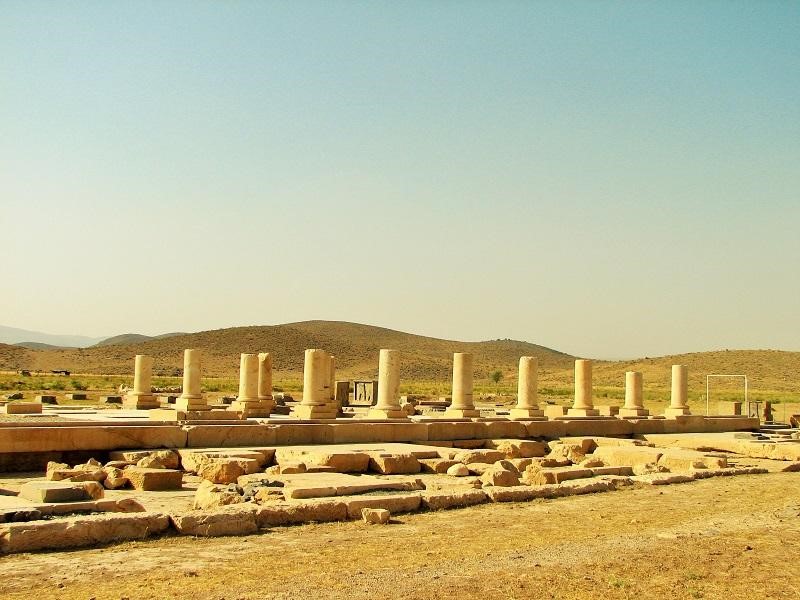
Cyrus’ private palace was demolished before the building was completed. Because of this, it was not symmetrical. This palace has a rectangular design with thirty columns and there are carvings on its gate.
The Audience Palace
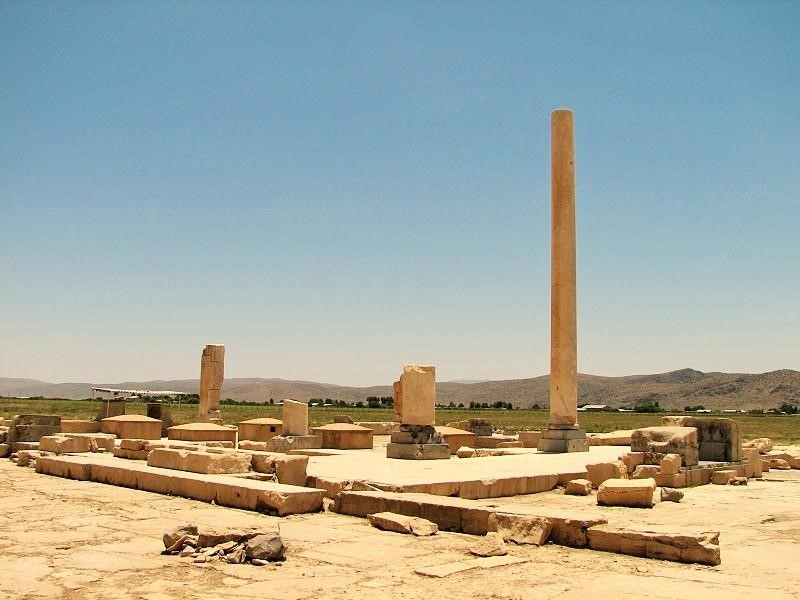
The public audience hall or audience palace of Cyrus the Great is the largest and most spacious structure on the site, which was used for public gatherings and official ceremonies. This hall has eight high columns with black bases and white shafts. There is no groove on the body of these columns and they have capitals in the shape of horned lions.
The Silghurid Atabegs of Fars relocated these columns to build a mosque. After the mosque’s demolition, they were returned to their original place.
Gateway Palace
The Gateway Palace of the Tomb of Cyrus in Pasargadae is known as the first building built in the eastern part of the ancient city of Pasargad. It is where kingdom dignitaries came to visit the king. There is little left of this structure, But the stone relief of the winged man is still standing in this palace. The stone relief displays the side profile of a bearded man with four wings wearing a crown. Until about a century ago, there was an inscription on top of this stone in which Cyrus introduced himself. But today it has been removed from the site.
Tomb of Cambyses I
Burial and religious architecture have been utilized in the construction of this building. This building is similar to the Cube of Zoroaster in Naqsh-e Rostam, near Persepolis. Today, only one wall remains from the Tomb of Cambyses, which is known as “Solomon’s Prison”.
Toll-e Takht
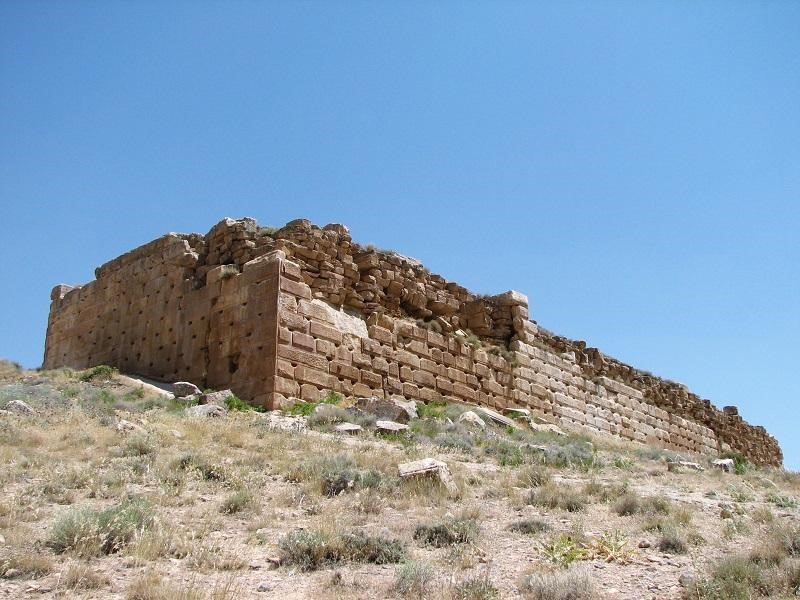
Toll-e Takht or Takht-e Suleiman (Throne of Solomon) is a large building on top of a hill overlooking the ancient city of Pasargadae. This building is made of very large stone blocks stacked on top of each other. Metal joints have been used to connect these stone blocks. Toll-e Takht has a flat and stable surface. This great building was first built by Cyrus the Great. Then Darius the Great added a brick part to it, which can be seen if we go to the top of Toll-e Takht in Pasargadae.
Mozaffari Caravanserai
Mozafari Caravanserai (Caravansary) was built in the 14th century using stone slabs from the ruins of the palaces of Cyrus. The uneven floor and walls of this caravanserai clearly show that the materials used are recycled and not procured for this building from the beginning.
The Importance of Pasargadae in Modern Culture
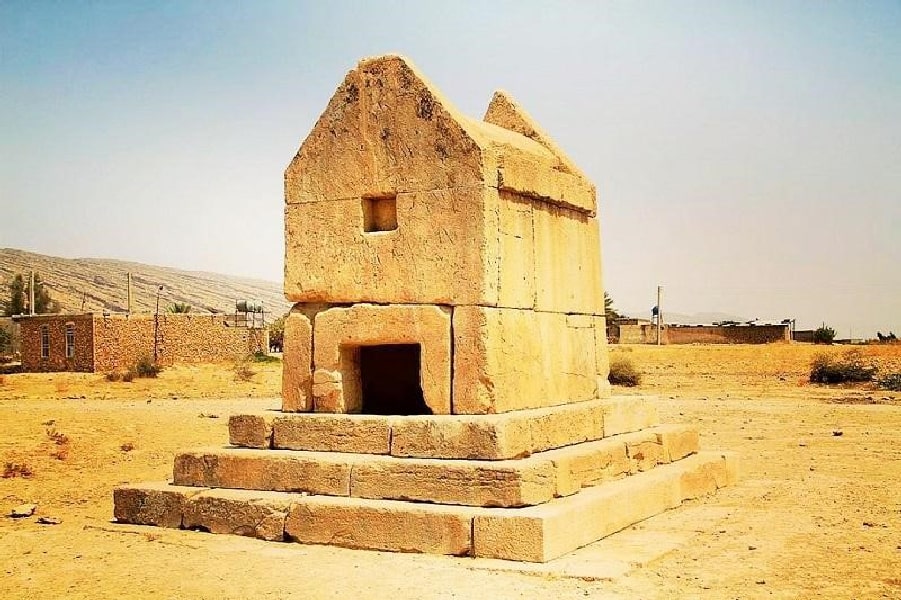
What has made the tomb of Cyrus in Pasargad an eternal monument for all Iranians is the famous name of Cyrus. Without Cyrus the Great, there would be no land and nation called Iran, and we would never speak of Iran. He is the first architect of this country.
Cyrus was determined to build a nation according to his ideals, ideals that were never achieved, and faced many historical peaks and troughs that changed the fate of Iran.
His inspiration and vision for creating a human rights-oriented and powerful government is still highly respected and has fascinated many who believe in Cyrus the Great. Before he became the ruler of the kingdoms of Asia, he was the ruler of the hearts of the people of his land and worked hard to spread peace and freedom. The name of Cyrus the Great is historically attributed to justice and tolerance.
Today, the tomb of Cyrus in Pasargadae and the historical monuments of this UNESCO world heritage site are a global tourist attraction and an important monument for us Iranians, which reminds us how our nation came to be.
Where is Pasargadae?
The tomb of Cyrus in Pasargadae UNESCO World Heritage Site is located in Fars province and near the city of Shiraz. To reach Pasargad to visit this historical monument, use the following location:
Frequently Asked Questions About the Tomb of Cyrus in Pasargadae
If you did not find the answer to your question here, leave us a comment in the comments section of this post and ask your question. We will answer it as soon as possible.
How far away is Pasargad from Persepolis?
Pasargad is located 60 km north of Persepolis and 120 km north of Shiraz.
Who ordered the construction of the tomb of Cyrus the Great?
The tomb of Cyrus was built by order of Cyrus himself and during his reign.
How many palaces are there in the Pasargad complex?
In the Pasargad site, there are the Audience Palace, Gateway Palace, and Private Palace. Of course, there are other buildings in this collection that you can visit when you visit this world heritage site.
Why do some people believe that the tomb of Cyrus in Pasargadae belongs to the mother of Solomon?
Some Iranians changed its name to the Tomb of Madar-e Soleyman (Solomon’s Mother) to prevent the Arab invaders from ransacking and destroying this building. Because they knew that Muslims respected Prophet Solomon and would not destroy the building.
Has the tomb of Cyrus in Pasargad ever been restored?
This tomb has been renovated three times:
- The first time was after Alexander invaded Persia when Macedonian soldiers ransacked the building. He ordered an immediate reconstruction and the punishment of the soldiers to show his respect for Cyrus the Great.
- Then, in 1972, a restoration operation aimed at preparing the tomb of Cyrus for holding the 2,500-year celebration of the Persian Empire.
- For the second time, in 2001-2008, the board of trustees of Iran’s cultural heritage organization signed a contract with an Italian Institute for Conservation and Restoration(ISCR) for the restoration of Pasargad, and the restoration of the building began with the cooperation of this team, in the Private Palace of Cyrus. Of course, later with the termination of the contract, the Iranian team continued the restoration work.
Why did Alexander the Great refuse to destroy the tomb of Cyrus?
During the invasion of Alexander the Great, some Macedonians broke the door of the tomb of Cyrus in Pasargad and looted its artifacts. But after reading the inscription inside the tomb of Cyrus, Alexander ordered the restoration of the tomb and punished those who damaged the tomb. It can be said that his purpose in doing this was a political move so that he could introduce himself as a suitable successor to Cyrus and the Achaemenids.


